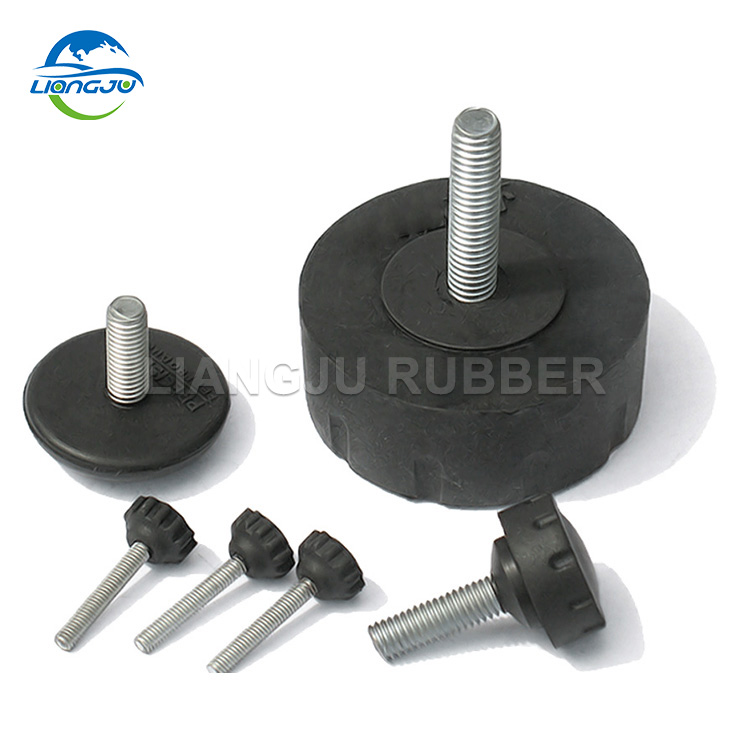 English
English Español
Español  русский
русский  日本語
日本語  Português
Português  Français
Français  Deutsch
Deutsch  tiếng Việt
tiếng Việt  Italiano
Italiano  Nederlands
Nederlands  ภาษาไทย
ภาษาไทย  Polski
Polski  한국어
한국어  Svenska
Svenska  magyar
magyar  Malay
Malay  বাংলা ভাষার
বাংলা ভাষার  Dansk
Dansk  Suomi
Suomi  हिन्दी
हिन्दी  Pilipino
Pilipino  Türkçe
Türkçe  Gaeilge
Gaeilge  العربية
العربية  Indonesia
Indonesia  Norsk
Norsk  تمل
تمل  český
český  ελληνικά
ελληνικά  український
український  Javanese
Javanese  فارسی
فارسی  தமிழ்
தமிழ்  తెలుగు
తెలుగు  नेपाली
नेपाली  Burmese
Burmese  български
български  ລາວ
ລາວ  Latine
Latine  Қазақша
Қазақша  Euskal
Euskal  Azərbaycan
Azərbaycan  Slovenský jazyk
Slovenský jazyk  Македонски
Македонски  Lietuvos
Lietuvos  Eesti Keel
Eesti Keel  Română
Română  Slovenski
Slovenski  मराठी
मराठी  Srpski језик
Srpski језик
Classification and characteristics of special rubber
2022-06-08
Since the reform and opening up, after more than half a century of development, my country's rubber industry has gone through a combination of domestic independent research and development and the introduction of foreign advanced technology: from original natural rubber to synthetic rubber, to today's high-performance special rubber. In the era of "intelligence + green", scientists have successively developed special rubber products such as hydrogenated nitrile rubber, thermoplastic vulcanizate rubber, high-performance silicone rubber, and fluoroether rubber, which have been used in aerospace, automobile transportation, electric power construction and other fields. Begin to develop towards high-end, green process and intelligent direction.
Classification and characteristics of special rubber
Special synthetic rubber materials refer to rubber materials with special properties such as high and low temperature resistance, aging resistance, ablation resistance, and chemical resistance, which are different from general rubber materials, mainly hydrogenated nitrile rubber (HNBR), thermoplastic vulcanizate (TPV), Silicone rubber, fluorine rubber, fluorosilicone rubber, acrylate rubber, etc. Due to its special properties, special rubber materials have become key materials necessary for the development of major national strategies and emerging fields such as aerospace, national defense and military industry, electronic information, energy, environment, and ocean. The properties and applications of several materials are described below:
1. Hydrogenated nitrile rubber (HNBR)
Hydrogenated nitrile rubber is a highly saturated rubber material obtained by selectively hydrogenating the butadiene units on the nitrile rubber chain for the purpose of improving the heat resistance and aging resistance of nitrile butadiene rubber (NBR). , its main feature is that it can be used for a long time at 150 ℃, and it can still maintain high physical and mechanical properties at high temperature, which can well meet the special requirements of high temperature resistance and chemical resistance of materials in automobile, aerospace, oil field and other fields. Requirements, more and more widely used, such as automotive oil seals, fuel system components, automotive transmission belts, drilling holding boxes and pistons for mud, printing and textile rubber rollers, aerospace seals, shock absorption materials, etc.
2. Thermoplastic Vulcanizate (TPV)
Thermoplastic vulcanizates, abbreviated as TPVs, are a special class of thermoplastic elastomers that are produced by "dynamic vulcanization" of immiscible blends of thermoplastics and elastomers, i.e. the selection of the elastomer phase during melt mixing with the thermoplastic Sexual cross-linking. Simultaneous vulcanization of the rubber phase in the presence of a crosslinking agent (possibly peroxides, diamines, sulfur accelerators, etc.) during melt blending with thermoplastics results in a dynamic vulcanizate continuous thermoplastic matrix composed of dispersed crosslinked rubber The particles in the phase, dynamic vulcanization leads to an increase in rubber viscosity, which promotes phase inversion and provides a multiphase morphology in the TPV. TPV has both the performance similar to thermosetting rubber and the processing speed of thermoplastics, which are mainly characterized by high performance/price ratio, flexible design, light weight, wide operating temperature range, easy processing, product quality and dimensional stability And recyclable, widely used in automotive parts, power construction, seals and other fields.
3. Silicone rubber
Silicone rubber is a special kind of synthetic rubber which is made of linear polysiloxane mixed with reinforcing fillers, functional fillers and auxiliaries, and becomes an elastomer with a network structure after vulcanization under heating and pressure conditions. It has excellent high and low temperature resistance, weather resistance, ozone resistance, arc resistance, electrical insulation, moisture resistance, high air permeability and physiological inertia. It has a wide range of applications in modern industry, electronic and electrical, automotive, construction, medical, personal care and other fields, and has become an indispensable advanced high-performance material in aerospace, defense and military industry, intelligent manufacturing and other fields.
4. Fluorine rubber
Fluorine rubber refers to a fluorine-containing rubber material containing fluorine atoms on the carbon atoms of the main chain or side chains. Its special properties are determined by the structural characteristics of the fluorine atoms. Fluorine rubber can be used at 250°C for a long time, and the maximum service temperature can reach 300°C, while the limit service temperature of traditional EPDM and butyl rubber is only 150°C. In addition to high temperature resistance, fluororubber also has excellent oil resistance, chemical resistance, acid and alkali resistance, and its comprehensive performance is the best among all rubber elastomer materials. It is mainly used for oil resistance of rockets, missiles, aircraft, ships, automobiles and other vehicles. Special-purpose fields such as sealing and oil-resistant pipelines are indispensable key materials for the national economy and national defense and military industries.
5. Acrylate rubber (ACM)
Acrylate rubber (ACM) is an elastomer obtained by copolymerizing acrylate as the main monomer. Its main chain is a saturated carbon chain, and its side groups are polar ester groups. Due to its special structure, it has many excellent characteristics, such as heat resistance, aging resistance, oil resistance, ozone resistance, UV resistance, etc., its mechanical properties and processing properties are better than fluororubber and silicone rubber, and its heat resistance, aging resistance and oil resistance are excellent. in nitrile rubber. ACM is widely used in various high-temperature and oil-resistant environments, and has become a sealing material developed and promoted by the automotive industry in recent years.
Application of special rubber in automotive sealing products
According to statistics, a car needs to use more than a dozen kinds of rubber products and more than 100 kinds of rubber accessories, and the consumption of rubber accounts for about 70% of the world's rubber production. The severe environmental protection situation and the change of development concepts and development methods have made the attention of high-performance, environmentally-friendly special rubber increasing day by day. The automobile industry has strict requirements for rubber. In addition to its excellent performance, it must also have good high temperature resistance, oil resistance, wear resistance, etc. Special rubber has a dominant position in automotive rubber.
Fluorosilicone rubber
Fluorosilicone rubber is obtained by introducing fluoroalkyl groups into the side chain of silicone rubber to modify it. The thermal aging performance of fluorosilicone rubber is excellent, mainly because its main chain is a saturated silicon-oxygen bond, and its bond energy is much greater than the C-C bond energy. However, its heat resistance is reduced due to the addition of trifluoropropyl group. Trifluoropropyl group is easily oxidized at high temperature and produces harmful gas containing fluorine. The operating temperature of fluorosilicone rubber is generally not more than 288 ℃. Fluorosilicone rubber has excellent oil resistance and chemical corrosion resistance, and can maintain good sealing and gasket performance in the oily environment of -6 8 ~ 230 ℃. Fluorosilicone rubber has great advantages in extremely cold and extremely hot harsh environments. Its applications in automobiles are mainly: fuel system seals, O-rings of automobile engines and transmission systems, heating and cooling systems, turbocharged hoses etc. are widely used.
fluororubber
Fluorine rubber is synthesized by introducing fluorine atoms into the main chain or side chain of the carbon chain. At present, more than 60% of fluorine rubber is used in automobile manufacturing, and its oil resistance, oxidation resistance and corrosion resistance are strong. In the 1950s, my country developed polyolefin fluororubber, and then developed perfluoroether rubber one after another. Fluorine rubber has excellent performance in high temperature and complex chemical environment. In automobiles, fluorine rubber is mainly used to prevent seals from being corroded in high temperature and other environments, and is used for crankshaft front and rear oil seals, engine valve stem seals, cylinder liners and clutches in seals, transmissions and various types of hoses. With the adjustment of domestic fuel structure, the variety of fluororubber is also increasing. The Fluorobon 97110 fluororubber developed by Dowty Company has a fluorine content far beyond the limit of general rubber. The fuel is very stable. After adding bisphenol for cross-linking, the fluororubber shows good alkali resistance, improves its mechanical properties after long-term contact with engine oil, etc., reduces the elongation rate of the breaking point, and greatly improves the performance of the seal.
Hydrogenated nitrile rubber
Hydrogenated nitrile butadiene rubber (HNBR) is a saturated elastomer formed by hydrogenation of nitrile butadiene rubber. The high degree of saturation makes it have good heat resistance, chemical corrosion resistance and oil resistance. In addition, HNBR also has good mechanical strength. In recent years, the large-scale development of mixed fuels such as ethanol gasoline has faced many challenges for automotive rubber, while HNBR has strong adaptability to mixed fuels and has strong stability among many additives. The oxidation resistance of HNBR makes it more suitable for automobile fuel system seals, automobile compartment sealing rubber, various sealing rings and oil-resistant rubber hoses, especially for high-end automobile sealing parts. HNBR manufacturers mainly include Germany's Lanxess Corporation and Japan's Zone, etc. The domestic Lanhua Company and Jihua Company have also achieved important results in the research of HNBR.
Acrylic rubber
Acrylic rubber is prepared by copolymerizing acrylate, which has excellent oil resistance and heat resistance. The saturated main chain structure of acrylic rubber gives it resistance to ozone attack, and the ester group it contains makes it have outstanding resistance to hydrocarbon oil swelling. Acrylic rubber is comparable to traditional nitrile rubber in terms of oil resistance, and the operating temperature is much higher than that of nitrile rubber, between 175 and 200 ° C, and its cold resistance and water resistance are relatively poor. It has outstanding advantages in high temperature and oily media, especially when exposed to high temperature. Acrylic rubber is generally used for automobile oil seals, mainly for oil seals of lubricating oil systems, shock absorption, and electrical insulating parts in contact with oil. In addition, it is also used in rubber parts that are resistant to ozone and weathering.
Conclusion
With the advancement and development of electronic automobile technology, special rubber has been widely used in automobiles, but there are still many problems worthy of attention: the performance of special rubber products needs to be improved to better serve the automobile industry; in addition, green The enhancement of environmental protection awareness has put forward higher requirements for the rubber industry, and the production of high-performance green and environmentally friendly rubber will be an inevitable trend of future automotive rubber. The future development of special rubber should focus on the research and development of synthetic technology and varieties, in order to shorten the gap with international advanced technology and promote the improvement of performance, thereby driving the overall performance improvement of related products, reducing pollution emissions, improving safety and stability, and achieving green and sustainable performance. continuous development.

-
E-mail
-
Call Us
-
Address
No.17, Huli Park, Tongan Industrial Concentration Area, Xiamen 361100 China
For inquiries about stabilizer bushing, dust cover, horse rubber parts or price list, please leave your email to us and we will be in touch within 24 hours.




